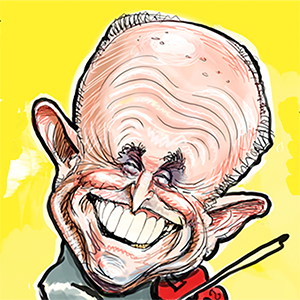Mike Preston: The Black quarterback is here to stay
Published in Football
BALTIMORE — After Ravens quarterback Lamar Jackson fumbled the snap in the fourth quarter Sunday against the Bengals, he stiff-armed defensive end Sam Hubbard while rolling to his right and at the same time directed tight end Isaiah Likely. Jackson threw back across his body and completed a 6-yard touchdown pass for one of the greatest plays in team history.
As spectacular as it was, seeing such highlight-reel plays in the NFL is becoming more common. This, according to Ravens executive vice president of player personnel Ozzie Newsome, is aided in part because of the evolution of the Black quarterback.
More sensational plays from quarterbacks are expected Sunday when the Ravens meet the Washington Commanders at 1 p.m. at M&T Bank Stadium. On one side is Jackson, who at 27 has already won two NFL Most Valuable Player Awards. On the other is 23-year-old Jayden Daniels, the clear front-runner for Offensive Rookie of the Year.
They are among 18 Black quarterbacks to start a game this season, many of whom are ranked among the best in the 32-team league.
“It’s fun to watch,” said Newsome, who with the Ravens became the league’s first Black general manager in 2002. “It’s like having a point guard or Steph Curry running your offense. You see similar plays every Sunday with [Kyler] Murray in Arizona or elsewhere around the league. You look at the number of quarterbacks drafted this year, I think the game has evolved to where you need an athlete at quarterback regardless if he is Black or white.
“Josh Allen is white, but he is an athlete who makes plays with his feet. The game has evolved because there is so much speed on defense that you need to have an athlete at the quarterback position.”
The increase in starting Black quarterbacks has pushed a lot of old stereotypes to the side. Both Newsome and James Harris, who with the Bills in 1969 became the second Black player to start at quarterback in pro football, remember when Black quarterbacks supposedly lacked football intelligence and weren’t considered great pocket passers or great leaders.
Each points to different moments when that narrative changed. For Harris, who worked in the Ravens’ front office with Newsome from 1997 through 2003, it was when Doug Williams won the Super Bowl with Washington in the 1987 season. Williams threw for 340 yards and four touchdowns in a 42-10 victory against the Broncos.
“I think it was because so many people all around the country remembered that day and saw it. That certainly had a big impact,” Harris said. “Then Warren Moon ended up as a Hall of Famer and Michael Vick being the first player picked. That win created more opportunities for others to play in a passing offense and to play quarterback.’’
Newsome points to when then-Houston Oilers coach Jeff Fisher selected Steve McNair with the third overall pick in the 1995 draft, making him the highest-drafted Black quarterback in NFL history.
McNair appeared in the playoffs four times with the franchise, which became the Tennessee Titans, including its run to the Super Bowl in 2000. McNair was selected to the Pro Bowl three times and was an All-Pro and Co-MVP in 2003.
“You had guys like Randall Cunningham and Warren Moon, guys sprinkled in who were having success, but I think that opened things up and the colleges went to wide-open football and the majority of high schools were really starting to produce African American quarterbacks,” Newsome said. “Around the early 2000s, it started to take off.”
Until then, NFL offenses were predictable. Most teams used one or two running backs and only occasionally used three receiver sets. Defenses had taken over, starting with the 1970s Steelers and the mid-1980s Bears then the 2000 Ravens, and that’s when the league shifted its rules to favor the offense to get more scoring.
Attack mode was in; the old read and react was out.
“The college game got inundated with a lot of African American quarterbacks,” Newsome said, “and from that led to them becoming more readily able to play in the National Football League. I think colleges started to open up their offenses because they didn’t necessarily want their guy just to sit in the pocket. Then it became a numbers game. Instead of defenses having an 11-on-10 advantage, it became 11-on-11 because you had to account for the quarterback. That allowed for more wide-open offenses and allowing a quarterback to become more of an athlete than just a statue.”
Like all the others who have played in the NFL, quarterbacks come in various shapes and sizes and have strengths and weaknesses. Jackson is great at improvising and has decent arm strength, even though the pass to Likely was a rocket. He has improved his accuracy greatly inside the red zone. Kordell Stewart, who played for the Steelers from 1995 through 2002, was also great at providing a lift when plays broke down.
Current Pittsburgh backup quarterback and former Super Bowl champion Russell Wilson has a reputation for throwing a great deep ball while Donovan McNabb, Cunningham and McNair were good all-around performers. Moon, a Hall of Famer, was simply a gunslinger, one of the best pure throwers to ever play the game.
Maybe the best of them all is Kansas City’s Patrick Mahomes, a three-time Super Bowl champion and MVP of the big game. Despite that, you still hear terms about how NFL offenses have become “street ball.”
That is true to some degree, but it’s better to have a scoring threat outside the pocket than to have a stationary target inside it. Eagles quarterback Jalen Hurts and former NFL MVP Cam Newton have played key roles in developing the next Black quarterbacks.
“Young quarterbacks know that they can become the next Lamar or Dak Prescott,” Newsome said.
It wasn’t until 2017, when Geno Smith replaced Giants legend Eli Manning late in that season, that all 32 teams had started at least one Black quarterback in their history. Harris pointed out that Black backup quarterbacks were hard to find for a while in the NFL.
Despite the current trend, modern players still remember and talk about pioneers such as Fritz Pollard, one of the first two Black NFL players in 1920, Jimmy Raye, Eldridge Dickey, Marlin Briscoe, Williams, and of course, Harris, one of the greatest storytellers in NFL history.
“First of all, I’m happy for them, and I’m impressed with their play,” Harris said. “We always had guys to play the position and all we’ve ever asked was just for an opportunity to play, and so many who were outstanding players were denied. Many were just as good as the players today.
“But it seems like we’re at the point where a Black quarterback has not only arrived, but is here to stay.”
©2024 Baltimore Sun. Visit baltimoresun.com. Distributed by Tribune Content Agency, LLC.










Comments